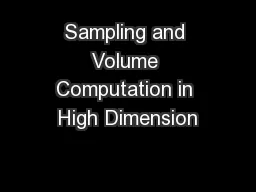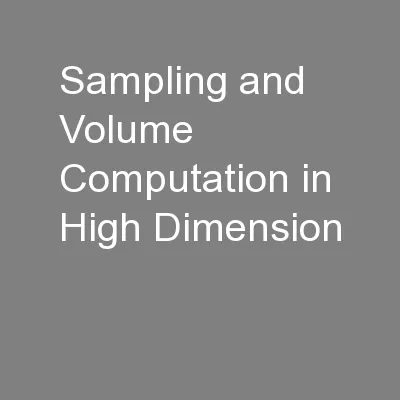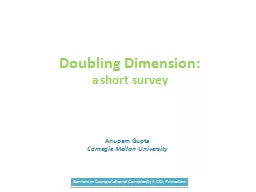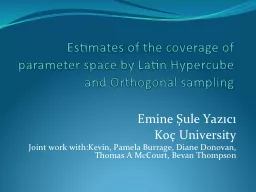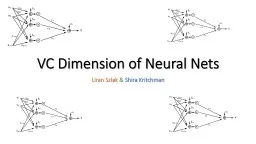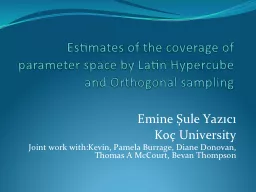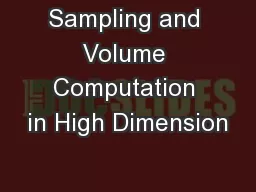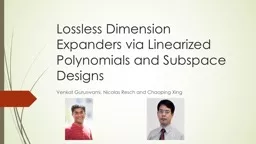PPT-Sampling and Volume Computation in High Dimension
Author : pamella-moone | Published Date : 2016-04-03
Santosh Vempala Georgia Tech A really old p roblem Given set K in ndimensional space estimate its volume Eg Pyramids wine barrels Polytopes Intersection
Presentation Embed Code
Download Presentation
Download Presentation The PPT/PDF document "Sampling and Volume Computation in High ..." is the property of its rightful owner. Permission is granted to download and print the materials on this website for personal, non-commercial use only, and to display it on your personal computer provided you do not modify the materials and that you retain all copyright notices contained in the materials. By downloading content from our website, you accept the terms of this agreement.
Sampling and Volume Computation in High Dimension: Transcript
Download Rules Of Document
"Sampling and Volume Computation in High Dimension"The content belongs to its owner. You may download and print it for personal use, without modification, and keep all copyright notices. By downloading, you agree to these terms.
Related Documents

